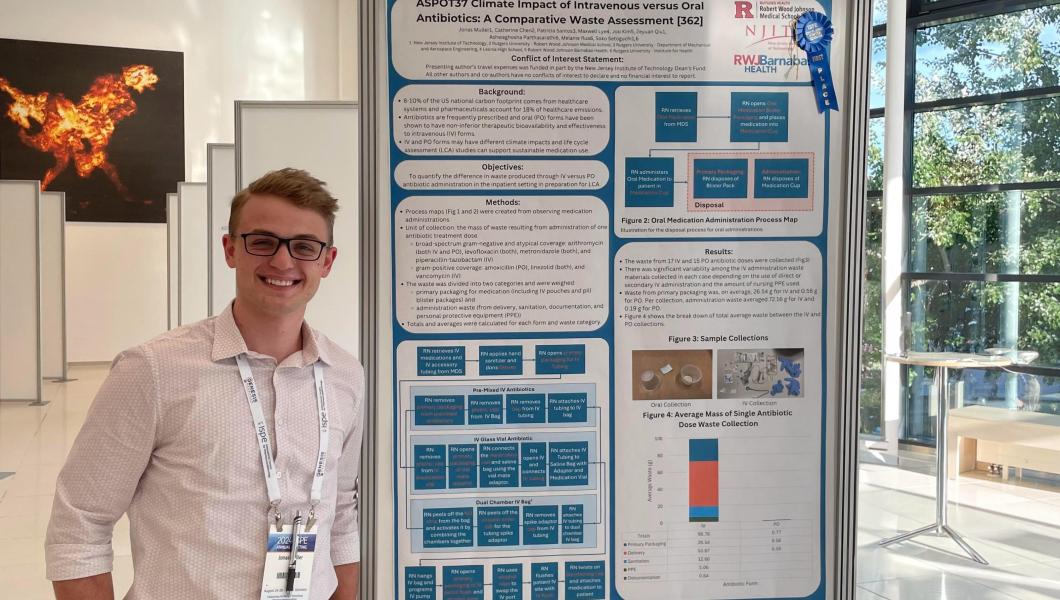NJIT Biologist Wins NSF CAREER Award to Explore Hidden Hydrological Factor to Forest Resilience

New Jersey Institute of Technology biologist Xiaonan Tai has received a National Science Foundation CAREER Award to investigate how landscape positions determine forest fate during extreme heat and drought — a factor that could help explain why some forests perish while others survive.
The CAREER Award, among NSF’s most prestigious honors for junior faculty, includes a grant of $1,162,914 to support Tai’s project, “Unveiling the Role of Hillslope Hydrology in Mediating Ecosystem Response to Drought,” over the next five years.
“This project bridges ecology and hydrology — two fields that haven’t been joined up in understanding or predicting forest mortality,” said Tai, assistant professor of biological sciences and director of NJIT’s Ecohydrology Lab. “Right now, research from these fields tell us opposite predictions about forest survival during drought. Ecologists expect trees in wetter areas might be more vulnerable when drought occurs, while hydrologists suggest more moisture should help them survive.
“The project is integrating these contradicting perspectives to understand how they interact to influence ecosystem response to drought — it may not be a simple linear relationship, but more like a bell curve that varies across the landscape and ecosystem types.”
Tai says that until now, not much research has explored the link between forest ecosystem health and hillslope hydrology — how precipitation travels across forest landscapes from higher elevations to lower, creating dramatically different local environmental conditions even within the same region.
“Rain doesn't stay where it falls … it redistributes across the landscape, creating variations from wet valleys to dry ridge tops,” explained Tai. “The key question is whether groundwater buffers ecosystems from drought or potentially aggravates ecosystem collapse. Earth system models can't accurately capture these intricate relationships because they rely on overly simplified representations of how water moves through landscapes.”
Tai's lab plans to combine multiple research approaches: analyzing remotely sensed observations of forest health, studying long-term ground-based forest survey records and using computer models to better understand how groundwater patterns influence forest resilience across the continental U.S.
The insights could help scientists develop more precise models for predicting which forest regions are most vulnerable to drought and how they might respond to future environmental conditions.
“Forest mortality prediction has been very difficult,” Tai said. “With limited resources to protect forests, we need to know which regions are most vulnerable to prioritize efforts.
“Looking at larger geographic areas in this way can help us see patterns we might miss in field studies that are typically limited in spatial extent. We need to understand where these relationships between groundwater and forest survival hold true, and why they may vary from place to place.”
Tai has already made significant contributions to understanding forest survival under climate stress — from studying wildfire impacts at Medicine Bow National Forest and revealing unexpected patterns in Western U.S. forest responses to drought, to developing models that quantify impacts of subsurface groundwater on forest mortality.
The CAREER Award also includes support for a range of education outreach initiatives, which will enable Tai to develop educational programs in terrestrial ecology from K-12 through Ph.D. levels at NJIT.
Initiatives include a summer research camp that will bring local high school, community college and NJIT students together for hands-on training in spatial ecology, as well as new programs for young learners to explore forest resilience concepts while building coding skills through a collaboration with Associate Professor Michael Lee of NJIT’s Ying Wu College of Computing.
The project, which will run from July 2025 through June 2030, is jointly funded by NSF’s Ecosystem Science Cluster in the Directorate for Biological Sciences and the Water, Landscape, and Critical Zone Processes program in the Directorate for Geosciences.

